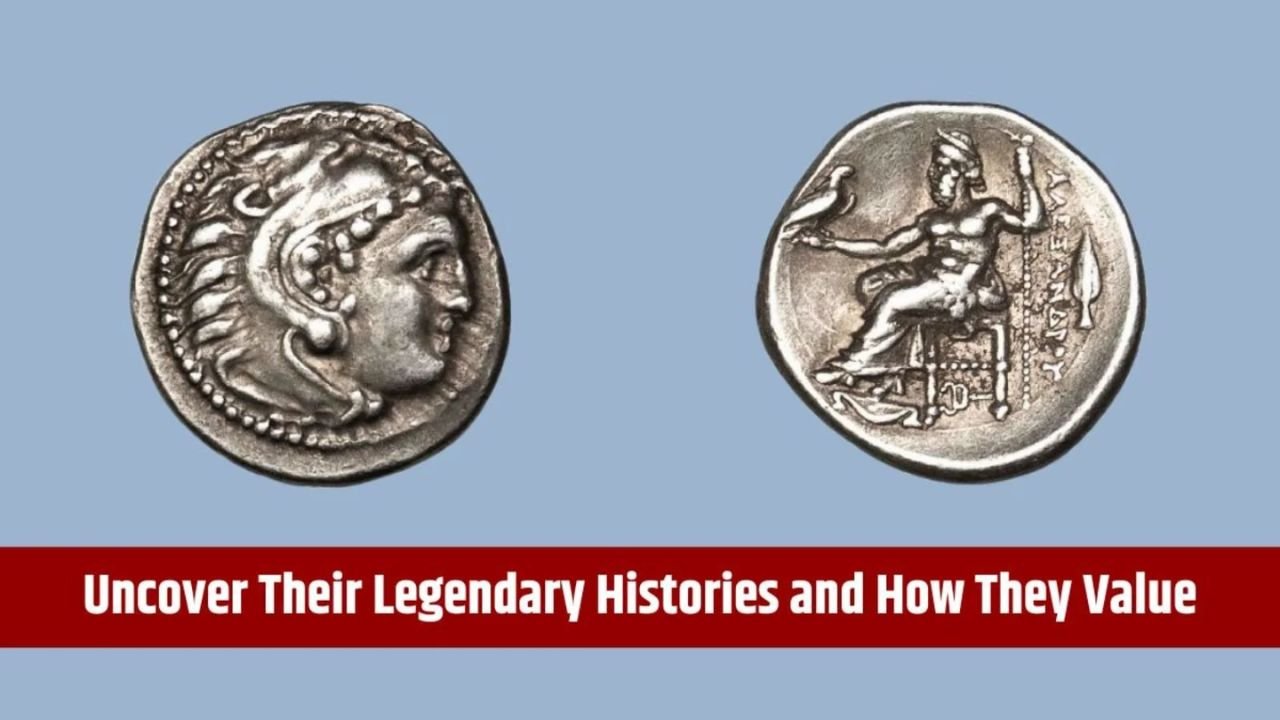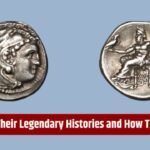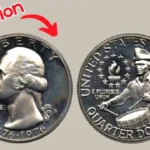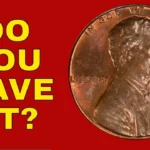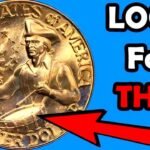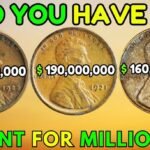9 Rare Washington Quarters Worth $26,000 Each – Are You Holding One?
If you’ve ever tossed a quarter into a vending machine without a second thought, you might want to think twice next time. Some Washington quarters, the common-looking 25-cent coins found in wallets and piggy banks, are actually worth up to $26,000 each – and many people don’t even know they have one.
These rare quarters are valuable due to small errors, limited mintings, or unique historical importance. Whether you’re a casual coin holder or someone curious about what’s in your change jar, this article will guide you through the 9 rare Washington quarters that are worth a fortune.
These 10 Most Valuable Rare Dimes value is $321 Million USD – Still in Circulation
Attention Please: Why Are Some Quarters Worth So Much?
Washington quarters were first minted in 1932, in honor of George Washington’s 200th birthday. While most are just regular coins, a few rare ones have mistakes, special editions, or low production numbers, making them extremely valuable to collectors.
Even a tiny difference in a coin’s look, mint mark, or year can make it rare. And when a coin is rare, collectors are ready to pay thousands to get their hands on it.
Overview Table: 9 Rare Washington Quarters Worth $26,000 Each
| Year | Mint Mark | Reason for Rarity | Estimated Value |
|---|---|---|---|
| 1932-D | D (Denver) | Low mintage (less than 500,000 made) | $26,000 |
| 1932-S | S (San Francisco) | Also very low mintage | $25,000+ |
| 1943-S | S | Double die obverse (error coin) | $15,000–$26,000 |
| 1950-D | D | Overstruck D on D mint mark (RPM error) | $10,000–$20,000 |
| 1964 | No mint mark | Silver content + transitional errors | $12,000–$26,000 |
| 1965 | No mint mark | Wrong planchet (silver instead of clad) | $15,000–$20,000 |
| 1970-S | S | Overstruck on a 1941 Canadian quarter | $20,000–$26,000 |
| 1983-P | P | Double die reverse + no mint set | $10,000–$25,000 |
| 2004-WI | No official mark | Wisconsin quarter with extra leaf error | $6,000–$26,000 |
1932-D and 1932-S Quarters – The Original Rarities
The 1932-D and 1932-S Washington quarters are two of the most valuable coins in the entire series. These were the first year of the Washington quarter design, and the Denver and San Francisco mints produced very few of them.
Both coins are considered key dates for collectors. If you find one of these in your collection, you may be holding a true treasure. Make sure the coin is in good condition — even better if it’s uncirculated.
The Lincoln Wheat Penny Valued at $530K, Still in Circulation
1964 & 1965 Silver Quarters – Hidden Metal Value
In 1964, quarters were still made of 90% silver, but starting in 1965, the U.S. Mint switched to a copper-nickel clad composition. A few 1965 quarters were accidentally struck on leftover silver blanks, making them extremely rare.
Collectors hunt these silver 1965 quarters because they look very similar to regular ones but are much more valuable due to both metal content and rarity. Weighing the coin or checking with a magnet can sometimes help identify silver.
These 10 Most Valuable Rare Dimes value is $321 Million USD – Still in Circulation
Error Coins – When Mistakes Become Valuable
Some quarters are rare not because of their age, but because of errors made during minting. These include:
-
Double die coins, where the design is stamped twice and slightly off.
-
Repunched mint marks, where the letter indicating the mint was stamped more than once.
-
Overstruck coins, where a design is printed on the wrong blank, like a Canadian coin.
The 1970-S quarter struck over a 1941 Canadian coin is one such case and is incredibly rare. Only a few are known to exist.
Wisconsin State Quarter – Extra Leaf, Extra Value
Among modern coins, the 2004 Wisconsin State Quarter has a well-known error called the “extra leaf”. In this design, a corn stalk has an extra leaf either pointing up or down, which wasn’t intended by the mint.
These errors slipped into circulation and are now worth thousands. If you have Wisconsin quarters, it’s worth checking for this unusual detail.
1983-P Quarter – No Mint Set & Double Die
The 1983-P quarter is rare because the U.S. Mint didn’t release mint sets for that year. As a result, most of the coins were used in circulation, and it’s hard to find one in excellent condition.
To make it even more valuable, some 1983-P coins have a double die reverse, which makes them highly collectible.
FAQs
1. How can I tell if my quarter is rare?
Start by checking the year and mint mark (small letter under the eagle or “Liberty”). Look up known rare dates and inspect your coin closely for errors or unusual features.
2. Where is the mint mark on a Washington quarter?
You can find the mint mark on the front (obverse) of the coin, just behind George Washington’s neck, or on the back in older coins (pre-1968).
3. Can I still find these quarters in circulation?
Yes, some of them, especially error coins or overlooked older ones, may still be in circulation or found in old coin jars, collections, or rolls.
4. Should I clean my old quarter before selling it?
No, cleaning coins can lower their value. Collectors prefer coins in original, unpolished condition.
5. Where can I sell a rare quarter?
You can sell rare coins through coin dealers, auction houses, online marketplaces, or by attending coin shows for expert evaluations.
The Lincoln Wheat Penny Valued at $530K, Still in Circulation
Final Verdict
The next time you receive change or go through an old drawer, don’t overlook the quarters. Some of them might be worth more than a luxury watch or even a car. These 9 rare Washington quarters have gained high value due to history, mistakes, or rarity—and they’re still out there waiting to be found.
Whether you’re just curious or planning to start collecting, it’s clear that even a simple 25-cent coin can carry a hidden fortune. So grab a magnifying glass and start checking — you might just be holding a $26,000 quarter in your hand.

